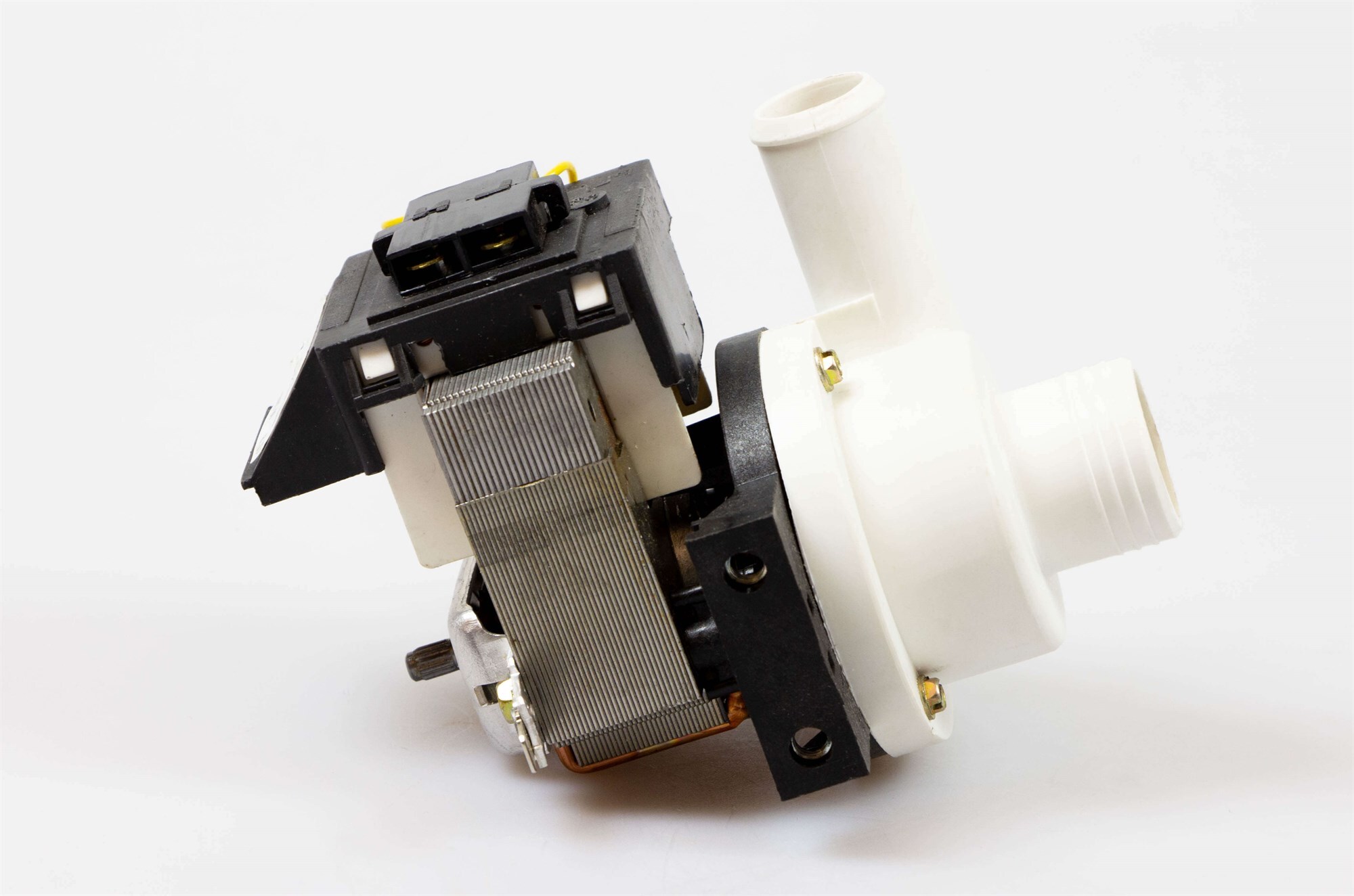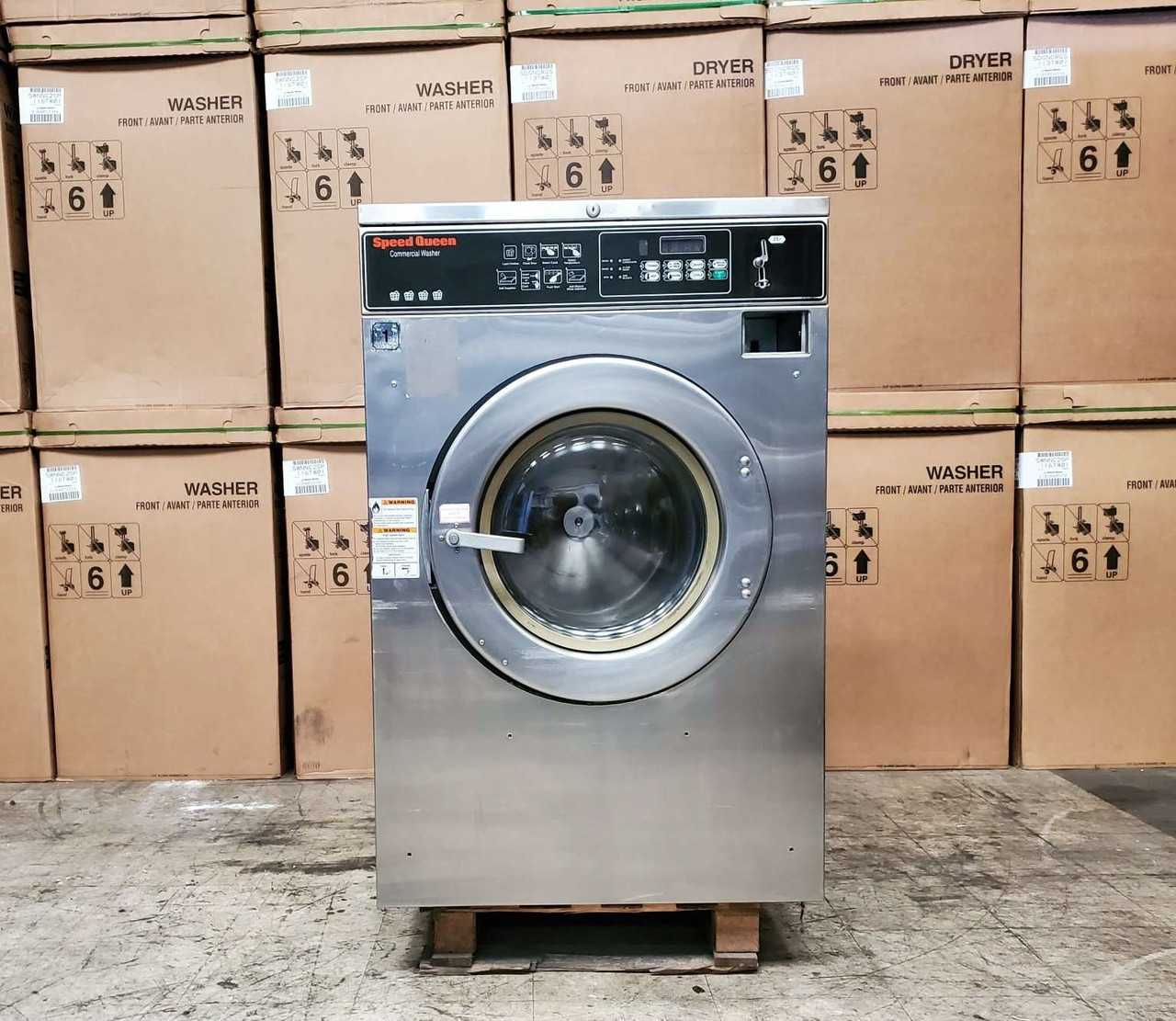Home>Home Appliances>Laundry Appliances>How Fast Does A Washing Machine Spin In Mph


Laundry Appliances
How Fast Does A Washing Machine Spin In Mph
Modified: August 17, 2024
Discover the speed of washing machine spin cycles in mph and learn how laundry appliances impact your daily routine. Explore the efficiency of laundry appliances.
(Many of the links in this article redirect to a specific reviewed product. Your purchase of these products through affiliate links helps to generate commission for Storables.com, at no extra cost. Learn more)
Introduction
When it comes to doing laundry, the washing machine is a modern marvel that has revolutionized the way we clean our clothes. One of the key features of a washing machine is its spin speed, which plays a crucial role in the efficiency and effectiveness of the laundry process. Understanding the significance of washing machine spin speed is essential for anyone looking to optimize their laundry routine and ensure the best possible results.
The spin speed of a washing machine refers to the rate at which the drum rotates during the spin cycle. This speed is typically measured in revolutions per minute (RPM), indicating how many times the drum completes a full rotation in a minute. The higher the RPM, the faster the spin speed, which results in better water extraction from the clothes.
In this article, we will delve into the intricacies of washing machine spin speed, exploring its impact on the laundry process and the quality of the results. We will also discuss the factors that influence spin speed, the importance of high spin speed, and the effects it has on different types of clothing. Additionally, we will provide practical tips for maximizing spin speed to achieve optimal cleaning and garment care.
By gaining a deeper understanding of washing machine spin speed and its implications, you will be better equipped to make informed decisions about your laundry practices and get the most out of your washing machine. So, let's embark on this journey to unravel the mysteries of washing machine spin speed and discover how it can elevate your laundry experience.
Key Takeaways:
- High spin speed in a washing machine expels more water from clothes, leading to faster drying, energy savings, and cleaner laundry. It’s like a superhero for your clothes, making them fresher and saving time!
- To maximize spin speed, balance your laundry load, choose the right fabrics, and keep your machine well-maintained. It’s like giving your washing machine a superpower boost for better cleaning and care of your clothes!
Read more: How Does A Portable Washer Work
Understanding Washing Machine Spin Speed
The spin speed of a washing machine is a critical factor that significantly influences the efficiency and effectiveness of the laundry process. It refers to the rate at which the drum rotates during the spin cycle, typically measured in revolutions per minute (RPM). This measurement indicates how many times the drum completes a full rotation in a minute. The spin speed plays a pivotal role in the final stages of the washing cycle, where it facilitates the removal of excess water from the clothes.
Higher spin speeds, denoted by a greater RPM, result in more vigorous spinning action, leading to better water extraction from the laundry. This means that clothes are left with less moisture at the end of the cycle, reducing the time and energy required for drying. Additionally, faster spin speeds contribute to improved overall cleaning performance, as they help to expel more dirt and detergent residue from the fabrics.
Understanding the spin speed capabilities of your washing machine is crucial for optimizing the laundering process. Different models offer varying spin speed options, with some featuring multiple speed settings to accommodate different types of fabrics and laundry loads. It's important to note that while high spin speeds are beneficial for most garments, delicate items may require gentler treatment to prevent damage.
Moreover, the spin speed of a washing machine can impact the wear and tear on clothing. Excessive spinning at high speeds may subject fabrics to increased stress, potentially shortening their lifespan. Therefore, finding the right balance between effective water extraction and garment care is essential when considering spin speed.
In essence, comprehending the significance of washing machine spin speed empowers users to make informed decisions about their laundry routines. By recognizing how spin speed influences the washing and drying processes, individuals can leverage this knowledge to achieve better cleaning results and enhance the longevity of their clothing.
Factors Affecting Washing Machine Spin Speed
Several factors contribute to the determination of a washing machine's spin speed, influencing its performance and the outcomes of the laundry process. Understanding these factors is crucial for users seeking to optimize their washing machine's capabilities and achieve the best possible results. Here are the key elements that affect washing machine spin speed:
-
Machine Design and Technology: The design and technological features of a washing machine play a significant role in determining its spin speed capabilities. Modern machines are equipped with advanced motors and components that enable higher RPMs, resulting in faster spin speeds. Additionally, the overall engineering and construction of the appliance impact its ability to achieve and maintain high spin speeds during the laundry cycle.
-
Load Size and Distribution: The amount and distribution of the laundry load directly influence the achievable spin speed. A well-balanced load allows the washing machine to reach and maintain higher RPMs during the spin cycle, facilitating better water extraction. Unevenly distributed or excessively large loads may limit the machine's ability to spin at its maximum speed, affecting the overall efficiency of the process.
-
Fabric Type and Garment Care Requirements: Different types of fabrics and garments have varying spin speed requirements to ensure proper care and maintenance. Delicate items such as silk or wool necessitate lower spin speeds to prevent damage, while sturdier materials like cotton can withstand higher RPMs for more effective water extraction. Washing machines with adjustable spin speed settings cater to these diverse fabric needs, offering flexibility and customization for various laundry loads.
-
Machine Age and Maintenance: The age and maintenance of a washing machine can impact its spin speed capabilities. Over time, wear and tear on components, such as the motor and bearings, may affect the machine's ability to achieve and sustain high RPMs. Regular maintenance, including cleaning and servicing, can help preserve the optimal performance of the washing machine, ensuring consistent and efficient spin speeds.
-
Environmental Factors: Environmental conditions, such as ambient temperature and humidity, can influence the performance of a washing machine's spin cycle. Extreme temperatures or high humidity levels may affect the machine's ability to reach and maintain its maximum spin speed, potentially impacting the overall water extraction and drying efficiency.
By considering these factors, users can gain valuable insights into the dynamics of washing machine spin speed and its determinants. This knowledge empowers individuals to make informed decisions about load management, fabric care, and machine maintenance, ultimately enhancing the effectiveness and longevity of their laundry appliances.
Importance of High Spin Speed
High spin speed is a pivotal factor that significantly influences the overall efficiency and effectiveness of the laundry process. The ability of a washing machine to achieve and maintain high revolutions per minute (RPM) during the spin cycle holds immense importance for several reasons.
First and foremost, high spin speed facilitates superior water extraction from the laundry load. As the drum rotates at a faster rate, centrifugal force expels a greater amount of water from the clothes, leaving them with significantly reduced moisture content at the end of the cycle. This not only expedites the drying process but also contributes to energy savings, as less time and power are required to dry the garments. The enhanced water extraction achieved through high spin speed is particularly advantageous for individuals seeking to minimize their environmental impact and reduce utility costs.
Furthermore, the thorough removal of excess water from the clothes during the spin cycle contributes to improved cleaning performance. By expelling more dirt, detergent residue, and impurities from the fabrics, high spin speed enhances the overall cleanliness and freshness of the laundry. This is especially beneficial for households with active individuals, children, or individuals with sensitive skin, as it ensures that the garments are thoroughly cleansed and free from potential irritants.
In addition to its impact on cleaning and drying efficiency, high spin speed also plays a crucial role in garment care and maintenance. By reducing the residual moisture in the clothes, it helps minimize the risk of musty odors, mildew formation, and bacterial growth, thereby preserving the quality and longevity of the garments. Moreover, the decreased moisture content resulting from high spin speed contributes to reduced wrinkling, making ironing and garment care more manageable and less time-consuming.
For individuals with busy lifestyles and demanding schedules, the importance of high spin speed becomes even more pronounced. The ability to achieve faster water extraction and shorter drying times translates to greater convenience and time savings, allowing users to complete their laundry tasks more efficiently and reclaim valuable time for other activities and responsibilities.
In essence, the importance of high spin speed in a washing machine cannot be overstated. It not only enhances cleaning and drying efficiency but also contributes to energy savings, improved garment care, and overall convenience for users. By recognizing the significance of high spin speed, individuals can leverage this knowledge to optimize their laundry routines and achieve superior results with every wash.
The speed of a washing machine spin is measured in revolutions per minute (RPM), not miles per hour (mph). The average spin speed of a washing machine is around 800-1200 RPM.
Impact of Spin Speed on Clothes
The spin speed of a washing machine exerts a profound influence on the condition and quality of the clothes being laundered. The RPM (revolutions per minute) at which the drum rotates during the spin cycle directly impacts the garments in several significant ways.
First and foremost, high spin speed contributes to superior water extraction from the clothes. As the drum rotates at a faster rate, centrifugal force expels a greater amount of water from the fabrics, resulting in significantly reduced moisture content in the garments at the end of the cycle. This not only expedites the drying process but also minimizes the potential for musty odors, mildew formation, and bacterial growth. By reducing the residual moisture, high spin speed helps preserve the quality and longevity of the clothes, ensuring that they remain fresh and free from potential contaminants.
Moreover, the impact of spin speed on clothes extends to the realm of fabric care and maintenance. Delicate items such as silk or wool necessitate lower spin speeds to prevent damage, while sturdier materials like cotton can withstand higher RPMs for more effective water extraction. Washing machines equipped with adjustable spin speed settings cater to these diverse fabric needs, offering flexibility and customization for various laundry loads. By tailoring the spin speed to suit the specific requirements of different garments, users can ensure that their clothes receive the appropriate care and treatment, thereby prolonging their lifespan and preserving their pristine condition.
Furthermore, the thorough removal of excess water from the clothes during the spin cycle contributes to reduced wrinkling, making ironing and garment care more manageable and less time-consuming. This is particularly advantageous for individuals seeking to streamline their laundry routines and minimize the effort required for post-wash maintenance.
In essence, the impact of spin speed on clothes encompasses aspects of moisture extraction, fabric care, and wrinkle reduction, all of which contribute to the overall quality and condition of the garments. By recognizing and leveraging the influence of spin speed, individuals can optimize the laundering process to ensure that their clothes emerge clean, fresh, and well-maintained after each wash.
Read more: How Does A Washing Machine Work
Tips for Maximizing Spin Speed
-
Load Distribution: Ensure that the laundry load is evenly distributed within the washing machine drum. An unbalanced load can hinder the machine's ability to reach its maximum spin speed, leading to suboptimal water extraction and cleaning results.
-
Proper Load Size: Avoid overloading the washing machine, as this can impede the achievement of high spin speeds. Adhering to the recommended load capacity ensures that the machine can effectively spin the laundry at its optimal RPM, facilitating superior water extraction.
-
Fabric Selection: When possible, opt for fabrics that can withstand higher spin speeds, such as cotton, for improved water extraction. For delicate items, utilize lower spin speeds to prevent potential damage and maintain the integrity of the garments.
-
Machine Maintenance: Regularly maintain and service the washing machine to ensure that its components, including the motor and bearings, are in optimal condition. A well-maintained machine is better equipped to achieve and sustain high spin speeds during the laundry cycle.
-
Use High-Quality Detergents: Utilize high-quality detergents that are formulated for efficient rinsing and residue removal. This can contribute to better water extraction during the spin cycle, enhancing the overall cleanliness and freshness of the laundry.
-
Select Appropriate Cycle: Choose the appropriate wash cycle that aligns with the fabric type and soil level of the laundry load. Some cycles are designed to optimize spin speed based on the specific requirements of the garments, ensuring effective water extraction and cleaning performance.
-
Regular Cleaning of the Machine: Keep the washing machine clean and free from debris, lint, and detergent buildup. A clean machine operates more efficiently, allowing for better spin speed performance and overall laundry results.
-
Optimize Spin Speed Settings: Familiarize yourself with the spin speed settings of your washing machine and adjust them according to the specific fabric and load requirements. Customizing the spin speed ensures that each laundry load receives the most suitable treatment for optimal water extraction and garment care.
By implementing these tips, users can maximize the spin speed of their washing machines, leading to enhanced water extraction, improved cleaning performance, and better garment care. These practices empower individuals to optimize their laundry routines and achieve superior results with every wash.
Conclusion
In conclusion, the spin speed of a washing machine is a fundamental element that significantly impacts the efficiency, effectiveness, and outcomes of the laundry process. By understanding the dynamics of spin speed and its implications, individuals can make informed decisions to optimize their washing routines and achieve superior cleaning results.
The significance of high spin speed cannot be overstated, as it contributes to superior water extraction, reduced drying times, and energy savings. The ability of a washing machine to achieve and maintain high revolutions per minute (RPM) during the spin cycle not only expels more dirt and detergent residue from the fabrics but also enhances the overall cleanliness and freshness of the laundry. Moreover, high spin speed plays a crucial role in garment care and maintenance, preserving the quality and longevity of the clothes while minimizing the effort required for post-wash maintenance.
Factors such as machine design and technology, load size and distribution, fabric type, machine age and maintenance, and environmental conditions influence the achievable spin speed of a washing machine. By considering these factors and implementing best practices such as load distribution, proper load sizing, fabric selection, and machine maintenance, users can maximize the spin speed of their washing machines, leading to enhanced water extraction, improved cleaning performance, and better garment care.
In essence, the impact of spin speed on clothes encompasses aspects of moisture extraction, fabric care, and wrinkle reduction, all of which contribute to the overall quality and condition of the garments. By recognizing and leveraging the influence of spin speed, individuals can optimize the laundering process to ensure that their clothes emerge clean, fresh, and well-maintained after each wash.
By gaining a deeper understanding of washing machine spin speed and its implications, individuals can make informed decisions about their laundry practices and get the most out of their washing machines. This knowledge empowers users to achieve optimal cleaning results, enhance the longevity of their clothing, and streamline their laundry routines, ultimately elevating the overall laundry experience.
Frequently Asked Questions about How Fast Does A Washing Machine Spin In Mph
Was this page helpful?
At Storables.com, we guarantee accurate and reliable information. Our content, validated by Expert Board Contributors, is crafted following stringent Editorial Policies. We're committed to providing you with well-researched, expert-backed insights for all your informational needs.















0 thoughts on “How Fast Does A Washing Machine Spin In Mph”